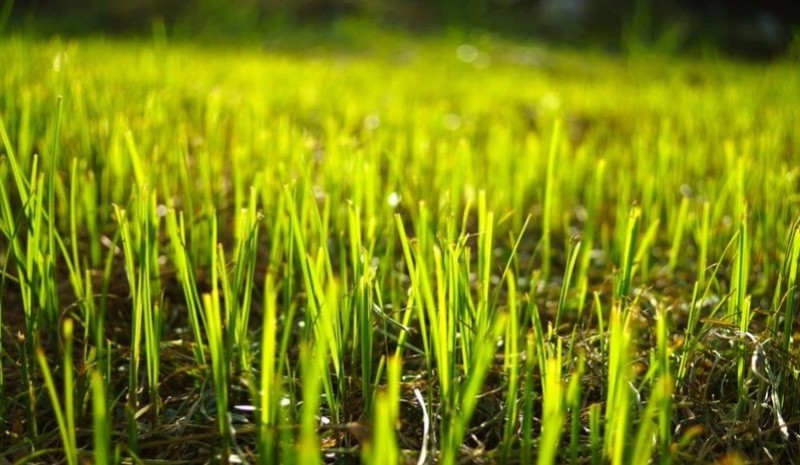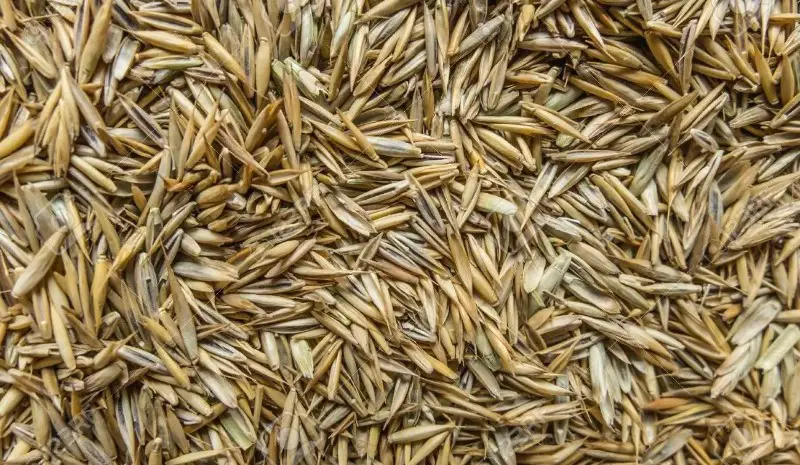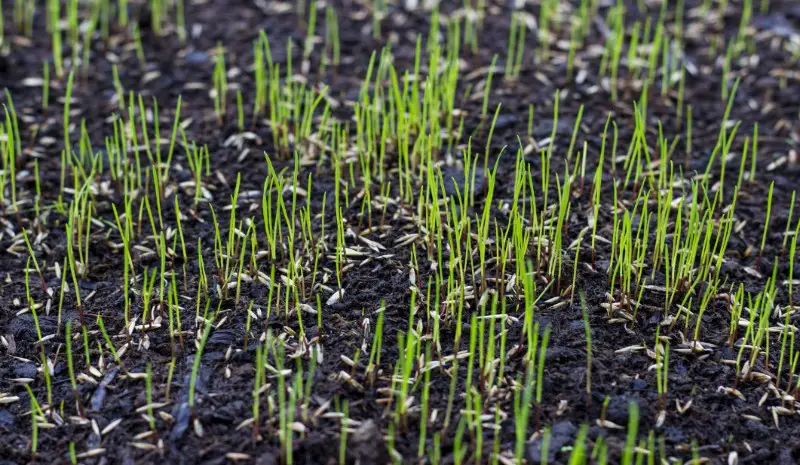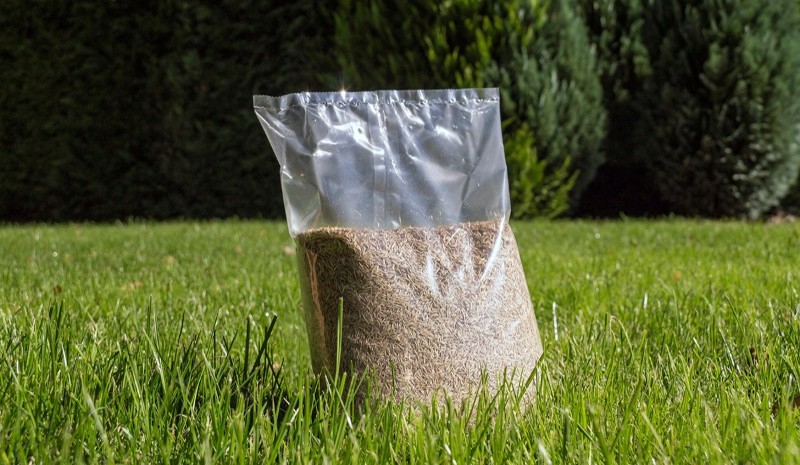Creating a lush green lawn requires effort and patience. A key aspect of establishing a healthy lawn from scratch is to grow grass from seed. However, the process of growing grass from seed can be a bit perplexing, especially for beginners. There are several factors that can affect the growth of grass seed, including climate, soil quality, and the type of grass seed used.
Understanding these factors is crucial for achieving successful results. In this guide, we will explore the various factors that can affect grass seed growth, how long it takes for grass seed to grow, and tips for growing healthy and beautiful grass from seed.
Factors Affecting Grass Seed Growth
Several factors can impact the growth of grass seed. These factors include climate, watering and moisture, soil type and quality, and the type of grass seed. Climate and temperature can dictate the amount of sunlight and warmth that the grass seed receives, which can affect germination rates.
Adequate watering and moisture levels are essential for germinating seeds and can help maintain healthy growth. Soil type and quality also play a vital role in seed growth. Poor soil conditions, such as overly compacted or nutrient-poor soil, can hinder root growth and ultimately affect the health of the grass.
Additionally, certain types of grass seed may require specific environmental conditions, such as shade or full sunlight, to grow successfully. Understanding these factors is crucial for growing healthy and vibrant grass.
Climate and Temperature
Climate and temperature are key factors that impact the growth of grass seed. Below are some of the ways in which climate and temperature can influence the growth of grass seeds:
- Sunlight: The amount of sunlight that the grass seed receives can affect germination rates. Warm-season grasses require full sunlight, while cool-season grasses can tolerate some shade.
- Temperature: Grass seed growth is also influenced by temperature. Most types of grass seed germinate best at temperatures between 60 and 75 degrees Fahrenheit. If temperatures are too hot or too cold, seed germination may be slower.
- Season: Different types of grass seeds grow better in different seasons. Cool-season grasses, such as fescue and Kentucky bluegrass, grow best in the fall and spring when temperatures are cooler. Warm-season grasses, such as Bermuda and Zoysia grass, grow best during the summer months when temperatures are higher.
Ultimately, understanding the climate and temperature requirements of the specific type of grass seed being used is crucial for successful growth. If the grass seed is not planted at the right time, in the right climate, and with ideal temperatures, it may not germinate or may fail to establish healthy growth.

Watering and Moisture
Watering and moisture are critical factors in grass seed growth. Adequate watering is essential to ensure proper soil moisture and promote germination. Newly sown seeds require daily watering to stay consistently moist during the first few weeks. As the grass begins to grow, deep watering once or twice a week can help establish a healthy root system.
Overwatering, on the other hand, can lead to harmful conditions and even disease. It is essential to monitor moisture levels to prevent waterlogging or soil drying out. Using a moisture meter, or simply feeling the soil’s surface, can help determine when watering is needed. In addition to watering frequency, watering methods can also affect grass growth.
Using a sprinkler system can distribute water evenly across the soil surface and also strengthen the grass’s root system by encouraging it to grow deeper. However, it is crucial to water in the morning or early evening to minimize evaporation and maximize water uptake. Avoiding watering during the midday sun helps prevent moisture loss due to evaporation.
Maintaining the appropriate moisture level in the soil is key to promoting healthy grass growth. If a lawn becomes dry or waterlogged, it can stress the young seedlings and eventually lead to patchy or unhealthy growth. By providing adequate, consistent moisture levels, grass seeds can thrive and create a rich, beautiful lawn.
If you’re interested in finding the perfect hand saw for cutting tree branches, I invite you to check out our latest article titled ‘Best Hand Saw for Cutting Trees.’ In this comprehensive guide, we explore a range of top-notch hand saw options that will make your tree-cutting tasks a breeze.
Soil Type and Quality
Soil type and quality is a crucial factors that can impact the growth of grass seeds. The soil’s ability to retain moisture, nutrients, and oxygen levels plays a vital role in how successful the grass seed germinates and grows. Different soil types have different characteristics, so it is important to understand your soil’s quality before planting grass seeds. Here are some of the things to consider when it comes to soil type and quality:
- Texture: Soil texture can vary from sand-like to clay-like. Sandy soils drain quickly and do not retain water or nutrients well, while clay soils retain moisture and nutrients but can be slow to drain. Loamy soil with a mixture of sand, silt, and clay is often the best option for planting grass seed as it retains nutrients and moisture while allowing adequate drainage.
- pH level: Soil pH can impact seed growth and should be between 6.0 and 7.5. If the soil pH level is too high or low, it can affect the availability of nutrients in the soil, which can impact seed germination and growth.
- Nutrient levels: Nutrient levels in the soil can affect how well grass seed germinates and grows. Nitrogen is one of the most important nutrients for plant growth, and a soil test can help determine if the soil has adequate levels of this nutrient. Other nutrients such as phosphorus and potassium should also be present in the soil for optimal seed growth.
- Drainage: Adequate drainage is essential for growing healthy grass, as standing water can suffocate the roots and lead to disease. If the soil is compacted or has poor drainage, it can be amended with the addition of organic matter or by rototilling the soil.
By understanding the type and quality of your soil, you can take steps to ensure that it is prepped and ready for grass seed germination and growth.
Grass Seed Type

The type of grass seed used can significantly impact the growth and overall appearance of the lawn. There are many different types of grass seed available, each with its unique characteristics. The most common grass seed types include:
- Cool-season grasses: These grasses, such as Kentucky bluegrass and tall fescue, thrive in colder temperatures and are ideal for cooler climates. They typically have a shorter growing season and may require more frequent watering and fertilization.
- Warm-season grasses: These grasses, such as Bermuda grass and Zoysia grass, perform best in warm climates and are ideal for hot and arid regions. They typically have a longer growing season and require less maintenance compared to cool-season grasses.
- Perennial ryegrass: This type of grass seed germinates quickly and is often used to complement cool-season grasses. It is ideal for high-traffic areas but may also require more watering and fertilization.
- Bentgrass: This type of grass seed is ideal for golf courses and fine lawns. It has a dense growth pattern but requires meticulous care and frequent mowing.
- Buffalo grass: This type of grass seed is drought-tolerant and ideal for low-maintenance lawns. It is well-suited for warm climates and may require minimal watering and fertilization.
Choosing the right type of grass seed for your lawn ultimately depends on your local climate, soil quality, and personal preferences. It is essential to research and select the most suitable grass seed type for your lawn to achieve the best results.
How Long Does It Take Grass Seed to Grow?
The growth process of grass seed can be divided into four main stages: germination, visible growth, maturity, and full growth. The length of each stage can vary based on the grass seed type, environmental conditions, and other factors. Generally, the germination period of grass seed ranges between 5-30 days, with some varieties able to sprout within just a few days.
The visible growth period follows, with new shoots starting to emerge from the soil and developing into blades of grass. This process can take anywhere from a few weeks to a few months. The maturity period comes next, with the grass starting to thicken and develop roots that can anchor the plant into the soil.
Finally, depending on the type of grass, full growth can take several months to a year. It is essential to be patient, as grass seed growth can take time, but with the proper care and attention, a lush and vibrant lawn will be achievable.
Are you looking to elevate your gardening game and create a flourishing oasis in your backyard? We’ve got just the article for you! Explore our latest blog post, “7 Best Trench Digging Tools for Your Garden” where we delve into the must-have tools to make your gardening tasks a breeze. Unearth the secrets to efficient trench digging and say goodbye to back-breaking labor!
Germination Period

The germination period is the time it takes for the grass seed to sprout and grow its first roots and leaves. Several factors can impact the germination period, including soil moisture levels, temperature, and the specific type of grass seed used. Some grass seeds may begin to germinate within a week, while others can take up to several weeks.
For example, warm-season grasses such as Bermuda and Zoysia typically germinate within 7-14 days in optimal conditions, whereas cool-season grasses such as Kentucky Bluegrass and Tall Fescue can take up to 21-28 days to germinate. During the germination period, it’s important to maintain consistent moisture levels in the soil, as dry or overly wet soil can hinder germination.
Additionally, soil temperatures should be between 60-75°F for optimal germination. To ensure that the soil remains moist, the grass should be watered regularly, typically 1-2 times a day for short periods of time. Once the grass has started to germinate, it’s important to continue this watering schedule until the grass has established deep roots.
It’s also worth noting that not all grass seeds will germinate at the same time, which can result in uneven growth. To address this, it’s recommended to lightly rake the soil and reseed any bare patches where germination failed to occur. The germination period is a crucial time for establishing a healthy lawn, and proper care and attention can help ensure successful growth.
Visible Growth Period
Once the grass seed has successfully germinated, the visible growth period begins. During this stage, the grass blades will begin to grow upward from the soil. The length of the visible growth period will depend on several factors, including the type of grass seed and the climate conditions.
Generally, the visible growth period lasts between two to six weeks, during which the grass will typically grow to a height of 2-3 inches. Regular watering, fertilization, and proper maintenance practices such as mowing and weeding can impact the speed and health of the visible growth period. It’s crucial to maintain proper care during this stage to ensure that the grass seedlings develop properly.
It’s important to note that during this stage, the grass will still have shallow roots, making it susceptible to drought and damage from foot traffic. It’s crucial to limit foot traffic and provide adequate moisture to the area during this growth period. Once the grass reaches a height of 3 inches, it’s typically ready for its first mow, signaling the end of the visible growth period and the beginning of the maturation stage.
Maturity Period
The maturity period is the final stage for grass seed growth. During this period, the grass is considered fully established and has reached its maximum growth potential. The duration of the maturity period can vary depending on the type of grass seed being used and the environmental conditions it is growing.
In general, it can take anywhere from several weeks to several months for the grass to reach maturity. At this stage, the grass will have a dense and consistent appearance and will be able to withstand regular use and foot traffic. The root system will also be well-established, allowing the grass to access necessary nutrients and water from the soil.
Regular mowing and maintenance are essential during the maturity period to ensure the continued health and vitality of the grass. It is important to note that the maturity period does not mean that the grass is impervious to damage or disease. Proper care and maintenance are still necessary to maintain the health and appearance of the grass. By monitoring the growth of the grass and addressing any issues that may arise, homeowners can maintain a lush, green lawn for many years to come.
Total Time for Full Growth
The total time for full growth depends on various factors such as grass seed type, soil condition, watering frequency, the health of the grass, and the climate. Generally, it can take about 2 to 6 weeks for seeds to germinate, depending on the variety of grass seeds. Once seeds have germinated, the visible growth period begins, which can take anywhere from 2 to 6 weeks.
During this time, the grass will begin to take shape, and individual blades will become visible. After the visible growth period is the maturity period, which lasts for several weeks. During this phase, the grass will become more established and will develop deeper roots.
Finally, the full growth period can take anywhere from a couple of months to a few years. This stage is dependent on how well the grass is cared for and how favorable the environmental conditions remain. The below table summarizes the timeline for the full growth of grass seeds.
| Phase | Duration |
|---|---|
| Germination | 2-6 weeks |
| Visible Growth | 2-6 weeks |
| Maturity | Several weeks |
| Full Growth | 2 months – a few years |
It is essential to note that the timeline for full growth can vary based on many external factors. The above table serves as a general guide. With proper care, such as regular watering and fertilization, and adequate sunlight, grass seed growth can be well-managed and hastened. Other crucial factors that can affect growth include mowing height and frequency, weed and pest control, and the maintenance of soil quality.
Tips for Growing Grass from Seed
There are several tips to keep in mind when growing grass from seed. First, it’s important to prepare the soil correctly before planting. This includes removing any debris, weeds, or rocks and ensuring that the soil is loose and aerated. Sowing the grass seed at the right time of year is also essential.
In general, it’s best to plant seeds in the fall or spring, when the weather is cooler and moisture levels tend to be higher. Regular watering and fertilization are vital for healthy growth, but be careful not to overwater or over-fertilize. Keep an eye out for weeds and pests, and take steps to control them as needed.
Finally, proper lawn maintenance, including mowing, aerating, and dethatching, can help ensure the long-term health and beauty of your lawn. By following these tips, you’ll be on your way to growing a vibrant and beautiful lawn.
Prepare the Soil Correctly
Preparing the soil correctly is essential for growing healthy grass from seed. Begin by removing any rocks or debris from the planting area. Next, loosen the soil with a rake or tiller, breaking up any large clumps and ensuring that the soil is well-aerated. It is also helpful to add organic matter, such as compost or topsoil, to the soil to improve its nutrient content and drainage. Based on the soil test results, it may be necessary to add specific nutrients or fertilizers to the soil to enhance soil fertility.
Once the soil is adequately prepared, level the surface, ensuring that the soil is not compacted, and the surface is level and smooth. This will help to ensure that the grass seed is evenly distributed and will grow consistently across the planting area. Proper soil preparation is a critical step toward establishing a healthy and productive lawn.
Discover effective strategies and expert advice on banishing those pesky soil mites in our latest article, “How to Get Rid of Soil Mites” Learn more about identifying soil mites, understanding their impact on plants, and implementing proven methods to eliminate them naturally.
Sow Grass Seed at the Right Time
Sowing grass seed at the right time is crucial for successful growth. Generally, the best time to plant grass seed is during the fall or spring seasons. Planting during the fall provides a long growing season with moderate temperatures, which allows the seed to establish strong roots before winter sets in. In contrast, planting during the spring provides warm temperatures and ample moisture, which can encourage rapid seed germination.
However, timing can vary depending on the specific climate and grass type. In warmer climates, it may be possible to plant grass seeds during the winter months. However, in areas with cold winters, it’s best to avoid planting grass seed during the winter season. This is because the seed may not establish strong enough roots before the ground freezes. Similarly, planting during the summer can be challenging due to higher temperatures and increased risk of drought. It’s also important to consider the timing of planting a seed in relation to other lawn care tasks.
For example, if planning to apply fertilizer or weed control products, it may be best to wait a few weeks after planting to avoid negatively impacting seed growth. Additionally, it’s essential to ensure that any existing grass is cut to an appropriate length before planting to avoid competition with new seedlings. Timing is crucial for successful grass seed growth, and careful consideration of climate and lawn maintenance tasks is necessary for optimal results.
Water and Fertilize Regularly
Watering and fertilizing are critical components of growing healthy and vibrant grass from seed. Newly planted grass seed requires consistent moisture for proper germination, so it is essential to keep the soil moist at all times. However, it is also crucial not to overwater the grass seed as this can lead to fungal growth and other issues.
The best way to maintain the proper moisture level is to water the grass seed lightly and frequently, rather than deep watering less frequently. Once the grass seed has germinated, it is crucial to continue watering regularly to encourage strong root growth. However, the frequency of watering can be gradually reduced as the grass grows and becomes more established. Fertilizing is also essential for maintaining healthy and vibrant grass growth.
Fertilizers provide essential nutrients that promote healthy root growth and encourage lush foliage. When choosing a fertilizer, it is essential to select one that is appropriate for the specific grass type and soil conditions. It is recommended to fertilize the grass seed four to six weeks after planting and then continue to fertilize regularly as the grass grows and becomes established.
Generally, fertilizing every six to eight weeks during the growing season is recommended. However, it is crucial not to overfertilize the grass, as this can lead to problems such as thatch buildup and pests. Regular watering and fertilizing are essential for growing healthy and vibrant grass from seed. Proper watering techniques and appropriate fertilizers suitable for the specific grass type and soil conditions will promote healthy root growth and encourage lush foliage.
Monitor for Weeds and Pests

Weeds and pests can pose a significant threat to the growth and health of your lawn. Monitoring for weeds and pests is an essential part of growing grass from seed. Here are some tips for effectively monitoring and controlling weeds and pests:
- Inspect Regularly: Regularly inspect your lawn for signs of weeds and pests, such as holes in the soil, yellowing grass, or the presence of pests. Catching problems early can help prevent extensive damage to your lawn.
- Identify the Problem: Once you notice signs of weeds or pests, identify the problem. Research the type of pest or weed and determine the best course of action for treatment and prevention.
- Use Natural Remedies: Consider using natural remedies, such as companion planting or organic pest control sprays, to control weeds and pests. These options can be less harmful to the environment and your lawn.
- Apply Chemical Treatments with Care: If you choose to use chemical treatments, apply them with care and follow all instructions. Too much or too little pesticide can be harmful to your lawn and safety.
- Maintain a Healthy Lawn: A healthy lawn is less susceptible to weeds and pests. Proper watering, fertilization, and mowing practices can help maintain a healthy lawn that can resist weeds and pests.
Remember, prevention is key when it comes to weeds and pests. By consistently monitoring and maintaining your lawn’s health, you can minimize the risk of pest and weed infestations and maintain a beautiful and thriving lawn.
Mow and Maintain Properly
Proper mowing and maintenance are key factors in the health and appearance of your lawn. Mowing should be done regularly, and the height of the grass should be maintained at a level that is appropriate for the type of grass that you have. Generally, warm-season grass types should be mowed shorter than cool-season grasses. Overmowing, often referred to as scalping, can damage grass and make it more susceptible to weed growth and disease.
Watering is also important for maintaining healthy grass. Watering deeply and infrequently helps grass develop deeper roots that can better withstand drought conditions. However, avoid overwatering, which can lead to fungal growth and disease. Fertilizing is another important aspect of lawn maintenance. Adding the appropriate amount of fertilizer can improve the color and health of the grass.
However, be sure not to over-fertilize, as this can cause excessive growth and lead to thatch buildup. Aerate your lawn to ensure proper oxygen and nutrient flow to the roots of the grass. Aerating helps reduce soil compaction that can stunt or stop grass growth.
Do not over aerate as this can damage the root system of the grass. Lastly, monitor your lawn for weeds and pests. Weeds and pests can choke out your grass, resulting in a patchy lawn or unsightly weeds. Proper maintenance and care will keep your lawn healthy, beautiful, and pest-free.
Conclusion
In conclusion, growing grass from seed requires planning, patience, and understanding. The growth process of grass seed is influenced by several factors, such as climate, watering and moisture, soil quality, and the type of grass seed used. Germination, visible growth, and maturity periods all contribute to the overall time needed for healthy and vibrant grass growth.
Proper soil preparation, choosing the right time to sow grass seed, regular watering and fertilizing, monitoring for weeds and pests, and proper maintenance through mowing and trimming are all essential for successful growth. Taking these steps into account can help gardeners and homeowners achieve a beautiful and lush lawn. By following these tips, planting grass seeds can be a rewarding and fulfilling experience, with the end result being a healthy and vibrant lawn that can be enjoyed for years to come.
Frequently Asked Questions
1) How often should I water my grass seed?
It’s recommended to water your grass seed twice a day, every day until it has reached maturity.
2) Can grass seeds grow in the shade?
Yes, some varieties of grass seed are better suited to shade, such as fine fescue and creeping red fescue.
3) Should I fertilize my grass seed?
Yes, fertilizer is important for the growth of grass seed. It’s recommended to fertilize the soil before sowing the seed and again after the grass has established itself.
4) How can I prevent weeds from growing on my lawn?
Regularly removing weeds by hand or using an herbicide can help control weed growth. Additionally, maintaining healthy grass through proper watering and fertilization can help prevent weeds from taking over.
5) Can I sow grass seed on an existing lawn?
No, it’s not recommended to sow grass seed directly on top of an existing lawn. The grass beneath will compete with the new seeds for nutrients and sunlight, leading to uneven growth.
6) What is the best time to sow grass seed?
The best time to sow grass seed is in the early fall or spring. This gives the seed enough time to establish itself before extreme temperatures hit.
7) How long does it take for grass seed to germinate?
The time it takes for grass seed to germinate can vary depending on several factors, but it usually takes between 5 and 10 days on average.
8) Can I use topsoil to prepare my lawn for grass seed?
Yes, applying topsoil can help improve soil quality and provide a good base for grass seeds to grow.
9) Is it necessary to rake in grass seed after sowing?
Yes, raking in the seed after sowing can help ensure good seed-to-soil contact and improve germination rates.
10) Can I use a weed and feed product on newly sown grass seed?
No, weed and feed products can harm newly sown grass seed. It’s recommended to wait until the grass has established itself before using any herbicides or insecticides.

